Last month, my 8-year-old nephew asked me why his favorite superhero always helped strangers, even when it was dangerous. What started as a simple bedtime question turned into a two-hour conversation about kindness that completely changed how he treats his classmates. That’s when it hit me—stories don’t just entertain us, they literally rewire how we see the world.
Research from the University at Buffalo backs this up: “media can distinctly influence separate moral values and get kids to place more or less importance on those values depending on what is uniquely emphasized in that content.” But here’s what the research doesn’t tell you—I’ve spent years collecting stories that actually create lasting change, and I can tell you that the right story at the right moment can shift someone’s entire worldview.
Look, I know this sounds cheesy, but stick with me. These aren’t your typical “be nice to people” tales. Some of these stories are ancient wisdom that still works today, others tackle stuff your grandparents never had to deal with—like whether it’s okay to ghost someone or what happens when AI makes biased decisions about your job application.
Table of Contents
-
How to Pick Stories That Actually Work (Instead of Eye-Rolls)
-
25 Stories That Matter, Sorted Into Six Types That Cover Everything
-
Personal Character Stories (The “Figure Yourself Out” Category)
-
Relationship and Community Stories (The “We’re All In This Together” Category)
-
Wisdom and Decision-Making Stories (The “How to Not Mess Up Big Decisions” Category)
-
Environmental and Social Responsibility Stories (The “Don’t Be Part of the Problem” Category)
-
Courage and Perseverance Stories (The “Do the Right Thing Even When It’s Hard” Category)
-
Technology and Modern Ethics Stories (The “Welcome to the Future, Now What?” Category)
-
-
How to Actually Use These Stories (Without Being Preachy)
-
Why These Stories Work (And Others Don’t)
-
How Nairrate Helps You Create Stories That Don’t Suck
-
Final Thoughts
TL;DR
-
Good stories feel real, don’t lecture you, make you feel something, and you can actually use them
-
These 25 stories cover everything from figuring yourself out to navigating digital drama
-
Personal character stories work for everyone from kindergartners to grandparents
-
Technology stories are super relevant but need more discussion (good luck explaining algorithms to a 5-year-old)
-
Environmental stories hit hard because we’re all worried about the planet our kids are inheriting
-
The best stories don’t give you answers—they give you better questions
-
You don’t need a PhD to use these; just share them when life gets complicated
How to Pick Stories That Actually Work (Instead of Eye-Rolls)
Here’s the thing that surprised me after collecting hundreds of stories: the most famous ones often fall flat. You know why? Because finding the right story isn’t about picking something everyone knows—it’s about matching what you need with what actually works.
Understanding these basics becomes even more important when you’re exploring story themes that resonate with universal human experiences and create lasting impact.
I’ve made this mistake myself—sharing a beautiful, meaningful story that completely bombed because it wasn’t right for the moment. After years of trial and error, I’ve figured out what separates stories that stick from stories that get forgotten by next week.
|
What to Look For |
Questions to Ask Yourself |
How Much It Matters |
|---|---|---|
|
Does It Feel Current? |
Will this make sense to people dealing with today’s problems? |
Really Important |
|
Is It Respectful? |
Does this represent different people fairly without stereotypes? |
Really Important |
|
Is the Message Clear? |
Can people figure out the lesson without me explaining it to death? |
Somewhat Important |
|
Does It Hit You in the Feels? |
Will this create emotional connections that last? |
Really Important |
|
Can You Actually Use It? |
Can people apply this to their real lives? |
Really Important |
|
Is It Age-Appropriate? |
Is this the right complexity for who I’m sharing it with? |
Somewhat Important |
Does It Feel Current and Timeless?
Your stories should tackle today’s problems while connecting to stuff humans have always dealt with. The best ones address things like digital drama, climate anxiety, or workplace ethics without losing touch with basic human nature. Stories that feel both modern and eternal hit the hardest.
Is It Respectful and Inclusive?
Look, we’ve all cringed at well-meaning stories that accidentally make people feel left out or stereotyped. I’ve been there. The good news? You can find stories from different cultures that speak to everyone without being tone-deaf. It’s not about avoiding cultural specificity—it’s about choosing stories that honor their roots while offering universal insights.
When teacher Maria Rodriguez was looking for stories for her multicultural classroom, she discovered that “The Two Wolves” Cherokee tale worked with kids from all backgrounds because everyone struggles with positive and negative emotions. But she was smart—she paired it with similar stories from other cultures, like the Islamic tale of “The Angel and Devil on Your Shoulders,” so all her students felt represented while learning the same universal truth.
Is the Message Clear Without Being Preachy?
Here’s where I’ve watched countless parents (including myself) completely kill a good story: over-explaining the moral. Trust me, your kids get it. Sometimes they get it better than we do. The best stories let people discover the lesson themselves—and it sticks better that way.
Does It Hit You in the Feels?
Stories that create genuine emotional connections inspire lasting change. You want something that engages hearts alongside minds, making lessons memorable and personally meaningful. If it doesn’t make you feel something, it probably won’t change anything either.
Can You Actually Use It?
The most powerful stories give you something you can actually apply to your daily life. I can’t tell you how many beautiful, wise stories I’ve encountered that left me thinking, “That’s nice, but now what?” Look for stories whose lessons translate into real actions you can take.
Is It Age-Appropriate?
Different concepts work better for different ages. What inspires a teenager might confuse a child or bore an adult. Consider not just the language, but the complexity of the ethical reasoning and maturity of themes.
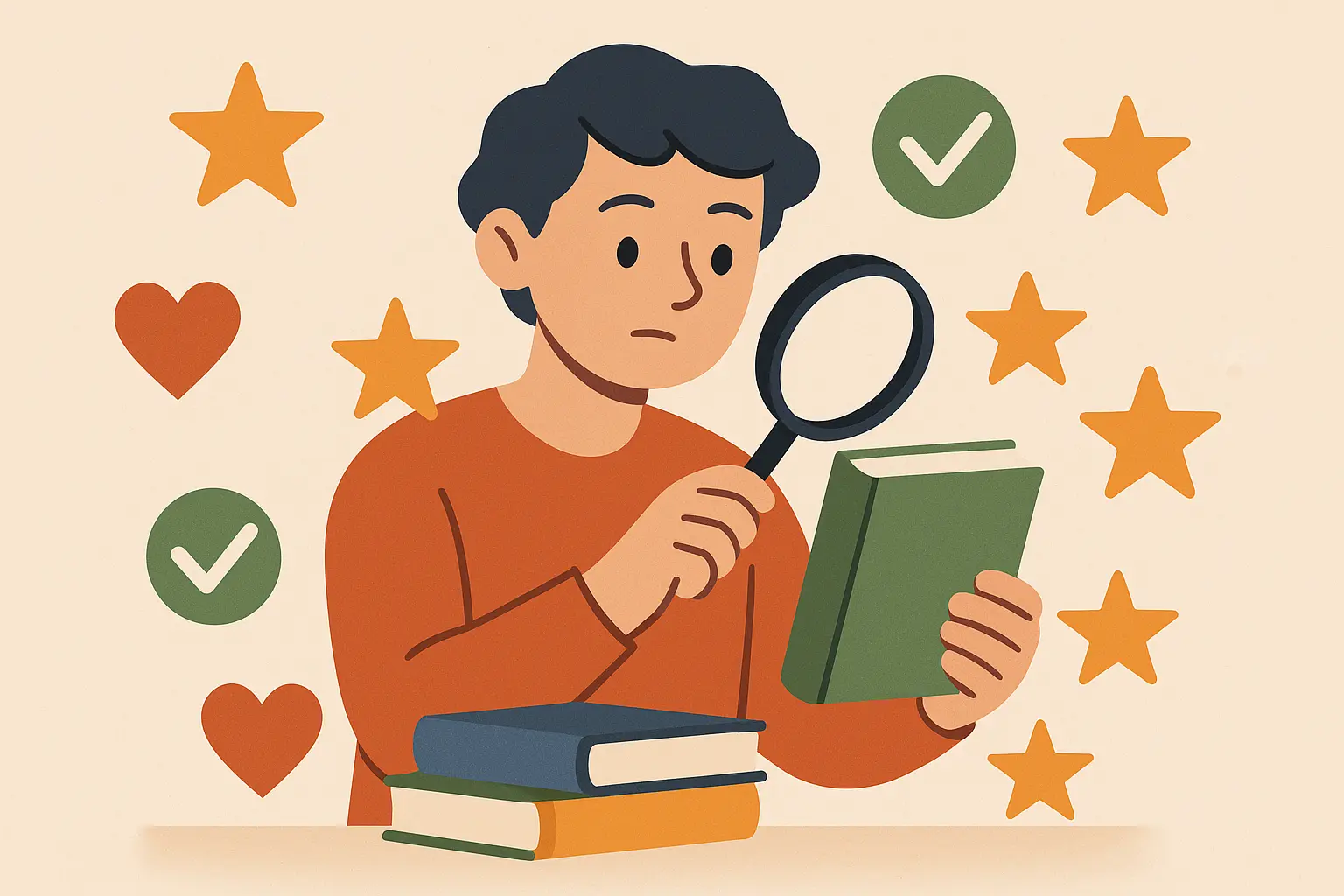
25 Stories That Matter, Sorted Into Six Types That Cover Everything
These aren’t just random stories I found online. They represent the best of both worlds—timeless wisdom that still works today, plus fresh takes on problems your smartphone created. Each category tackles a different part of being human, so you’ve got tools for whatever life throws at you.
Just as folktales have preserved wisdom across generations, these stories bridge old-school values with new-school challenges.
I’ve organized these into six categories that cover different aspects of human experience. Some will hit you immediately, while others might challenge your current thinking—both reactions are valuable. Your kids will probably roll their eyes at first, but stick with it.
Personal Character Stories (The “Figure Yourself Out” Category)
Personal character is where everything else starts. These stories help you understand the battles happening inside your own head and give you tools for becoming the person you actually want to be.
Character development happens in quiet moments when nobody’s watching. These five stories explore the internal struggles we all face and offer frameworks for becoming someone you can live with.
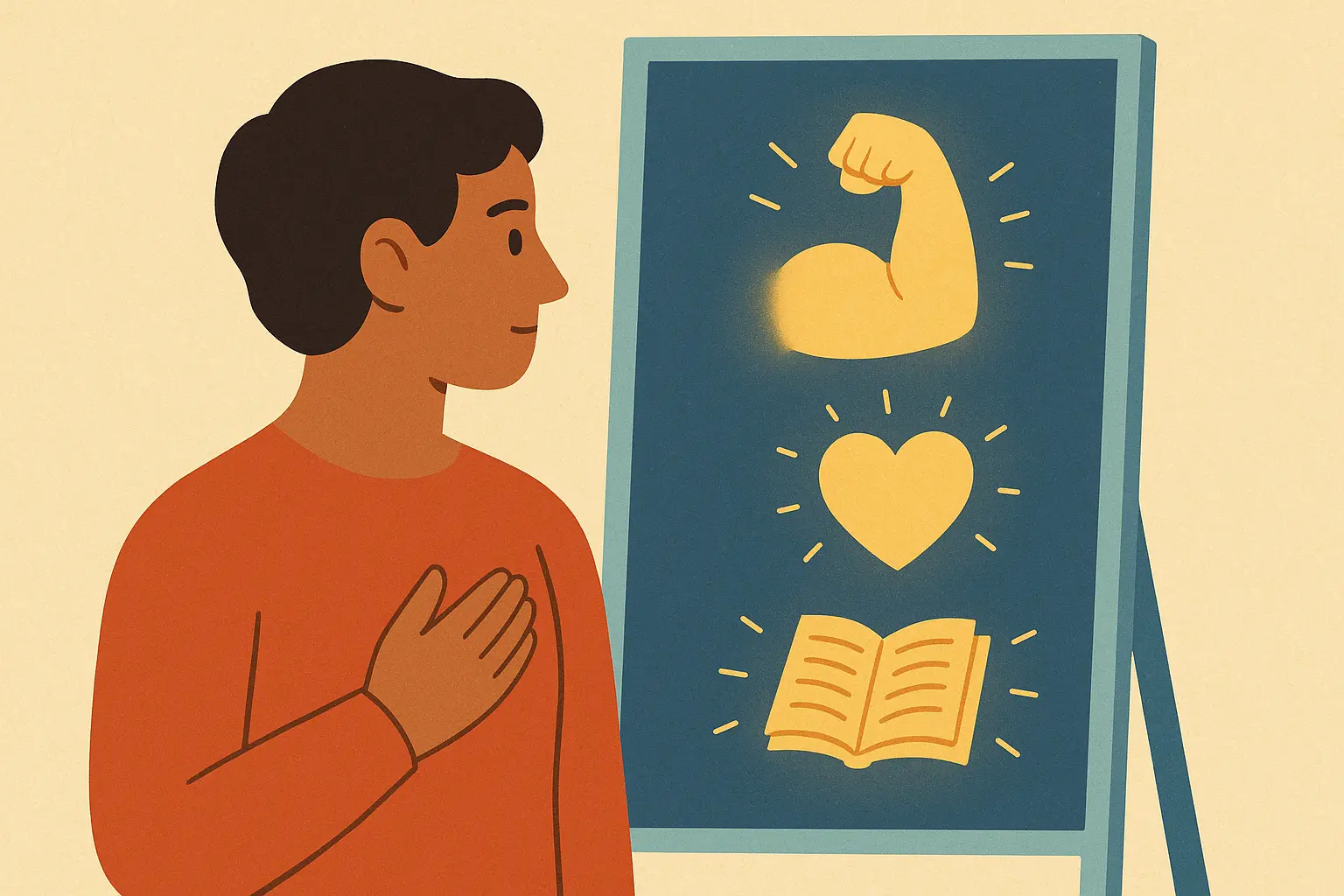
1. The Two Wolves
You know that feeling when you’re torn between being petty and taking the high road? The Cherokee have this perfect story about it. A grandfather tells his grandson that we all have two wolves fighting inside us—one angry and bitter, one kind and peaceful. The kid asks which one wins, and grandpa says, “Whichever one you feed.” Simple, right? But it’ll stick with you.
This story works in therapy sessions, parenting moments, and those 3 AM moments when you’re replaying an argument in your head. It gives you a simple framework for understanding why you sometimes feel like you’re at war with yourself.
2. The Cracked Pot
An Indian water bearer carries two pots daily—one perfect, one cracked. The cracked pot feels terrible about its imperfection until it realizes something amazing: the water leaking from its crack has watered beautiful flowers along the path, creating something the perfect pot never could.
I know most of us aren’t carrying water pots, but we’ve all felt like the cracked one—like our flaws make us less valuable. This story flips that whole idea on its head.
3. The Stonecutter’s Dream
A stonecutter spends his life envying everyone else—first a rich merchant, then a powerful king, then the mighty sun, then a strong cloud, then an immovable mountain—only to discover that even the mighty mountain can be shaped by a simple stonecutter. Sometimes the grass isn’t greener; sometimes you just need to appreciate your own patch.
4. The Butterfly and the Cocoon
A well-meaning person helps a butterfly struggling to emerge from its cocoon by cutting it open, but the butterfly emerges weak and unable to fly. Turns out, the struggle to break free naturally is what strengthens the butterfly’s wings—some struggles are necessary for growth.
This one hits different when you’re watching your kids struggle with something and every instinct tells you to fix it for them.
5. The Monk and the Scorpion
A monk repeatedly saves a scorpion from drowning despite being stung each time. When questioned, he explains that just as it’s the scorpion’s nature to sting, it’s his nature to help—we shouldn’t let others’ negative actions change our positive nature.
Look, I’m not saying you should let people walk all over you, but this story makes you think about whether you want to be defined by how others treat you or by who you choose to be.
Relationship and Community Stories (The “We’re All In This Together” Category)
Strong relationships are what make life worth living. These stories reveal how connection, cooperation, and community support create resilience that going it alone never can.
Building genuine relationships requires vulnerability, patience, and the willingness to put the group’s good above your personal convenience sometimes. These stories show why that investment pays off.
6. The Bundle of Sticks
A dying father shows his sons that individual sticks break easily, but a bundle of sticks bound together can’t be broken. Unity and cooperation make families and communities stronger than individuals trying to do everything alone.
Corporate trainer James Mitchell uses this story during team-building sessions at tech companies. He follows it with actual physical challenges—first individually, then as teams. One memorable session involved software developers who had been working in silos for months. After the story and team challenge, they voluntarily restructured their workflow to include daily collaboration, resulting in a 40% faster product launch and way happier employees.
7. The Golden Rule Garden
A community garden thrives when neighbors treat others’ plots like they’d want their own treated, but starts dying when some members get selfish. Only when they return to mutual respect does the garden flourish again.
8. The Bridge Builder
An old man builds a bridge after safely crossing a dangerous chasm. When asked why he’s building it after he no longer needs it, he explains it’s for the young travelers coming behind him—teaching us to think about future generations in our choices.
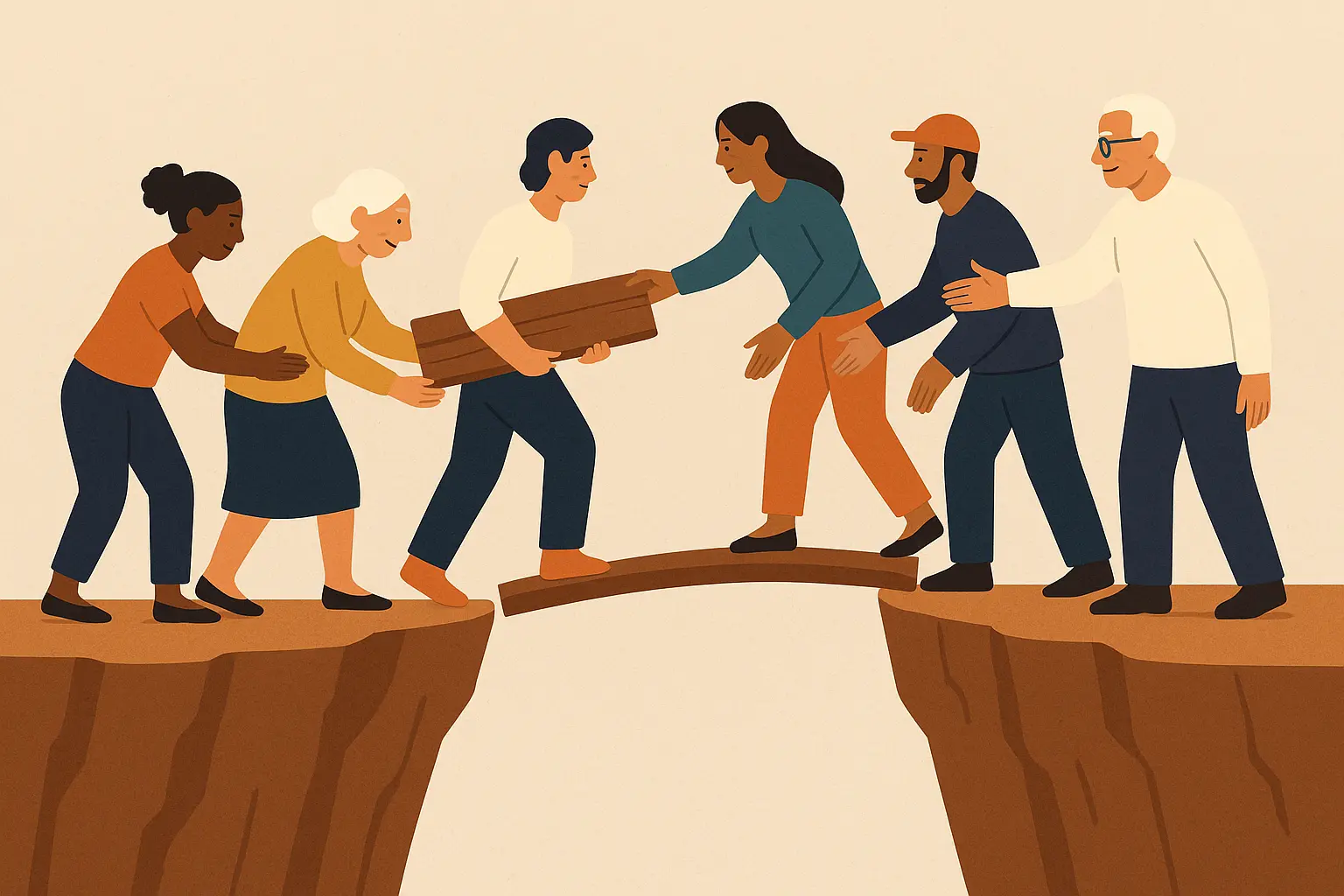
9. The Listening Heart
Two friends argue constantly until one learns to truly listen before responding. Their relationship transforms, showing that genuine listening—not just waiting for your turn to talk—is the foundation of meaningful relationships.
Honestly, this one called me out. I realized I was doing way more “waiting to speak” than actual listening.
10. The Ripple Effect
A single act of kindness by one person creates a chain reaction of good deeds throughout a community, demonstrating how individual actions can create widespread positive change.
Wisdom and Decision-Making Stories (The “How to Not Mess Up Big Decisions” Category)
Good decision-making requires more than just logic—it demands wisdom that comes from understanding human nature, recognizing patterns, and seeing beyond immediate consequences. These stories offer frameworks for navigating life’s most challenging choices.
We make thousands of decisions daily, but the big ones—the ones that define who we become—require a different kind of thinking. These stories provide that framework.
11. The Wise Judge
When two women claim the same baby, a wise judge suggests cutting the child in half. The real mother immediately gives up her claim to save the child’s life, revealing the truth—teaching that wisdom often lies in understanding human nature and motivations.
This isn’t just about baby custody. It’s about how understanding what people really care about reveals who they truly are.
12. The Three Doors
A person faces three doors: one leading to immediate pleasure, one to delayed gratification, and one to service of others. The story explores the consequences of each choice, showing that the path of service often leads to the deepest fulfillment.
13. The Farmer and the Seasons
A farmer learns not to judge events as purely good or bad after experiencing how apparent disasters (losing his horse, his son breaking his leg) ultimately protect his family from greater harm, teaching patience and perspective in judgment.
This story has saved me from countless panic attacks about things that seemed terrible in the moment but turned out fine—or even beneficial—later.
14. The Two Paths
A traveler encounters a fork in the roa
A traveler encounters a fork in the road with two signs: one promising an easy journey with no growth, another warning of challenges but promising transformation. The story explores how our choices shape who we become, not just where we end up.
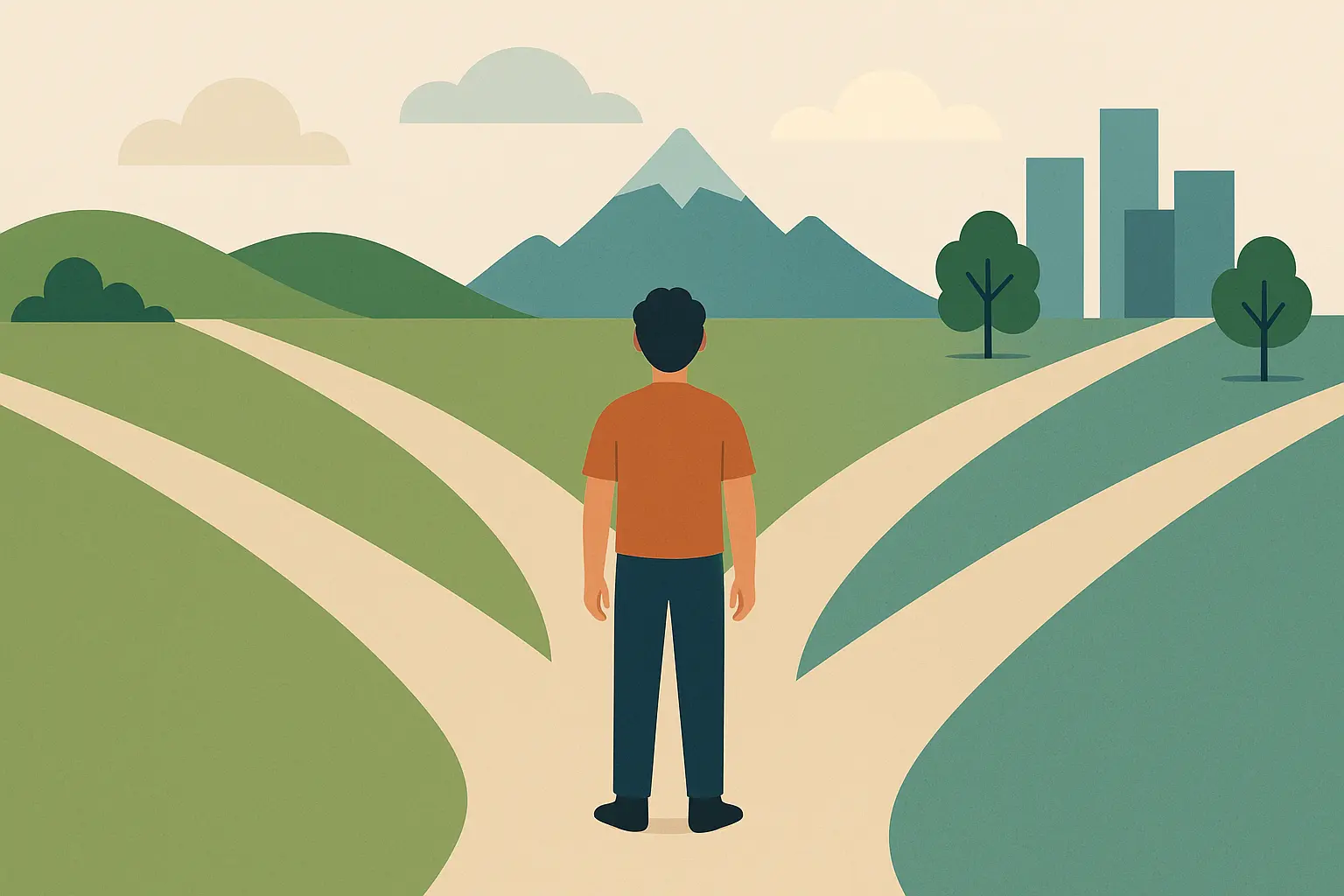
Environmental and Social Responsibility Stories (The “Don’t Be Part of the Problem” Category)
Environmental and social challenges require collective action, but change starts with individual responsibility. These stories show how personal choices create ripple effects that can heal or harm our shared world.
I’ve watched communities transform when people realize their individual actions actually matter. These stories make that connection visceral and urgent.
15. The Last Tree
In a world where trees are nearly extinct, a child finds and protects the last seed, facing pressure to sell it for profit. The story explores environmental stewardship and the courage needed to protect what’s valuable for future generations.
16. The Shared Well
A community well becomes polluted because each person thinks their small contribution to the problem won’t matter. Only when they realize their collective responsibility do they work together to restore clean water for all.
The village of Clearwater had thrived for generations around a pristine well that provided the purest water in the region. As the community grew and modernized, each household began contributing small amounts of waste—a little soap from washing, some food scraps, chemical runoff from new appliances.
Maria, the village elder, noticed the water growing cloudy but was dismissed when she raised concerns. “My little bit of soap won’t hurt anything,” said one neighbor. “Everyone else is doing it,” reasoned another. The local factory owner argued that his contribution was “negligible compared to the whole well.”
Within two years, the well was so polluted that children began falling ill. The community faced a crisis: expensive water purification systems, trucking in water from distant sources, or working together to restore their shared resource.
The turning point came when Maria organized a community meeting where each person calculated their individual contribution over time. The collective impact was staggering—thousands of gallons of contaminated water from actions each person considered “too small to matter.”
The restoration required every household to change their habits, the factory to install filtration systems, and the community to establish ongoing monitoring protocols. It took three years of collective effort, but Clearwater’s well became pure again.
17. The Digital Footprint
A teenager learns that their online actions have real-world consequences when careless posts hurt others and come back to affect their own opportunities, teaching digital responsibility and empathy.
18. The Giving Tree’s Lesson
A modern retelling where the tree sets boundaries while still being generous, teaching that sustainable giving requires balance and that true love sometimes means saying no to prevent harm.
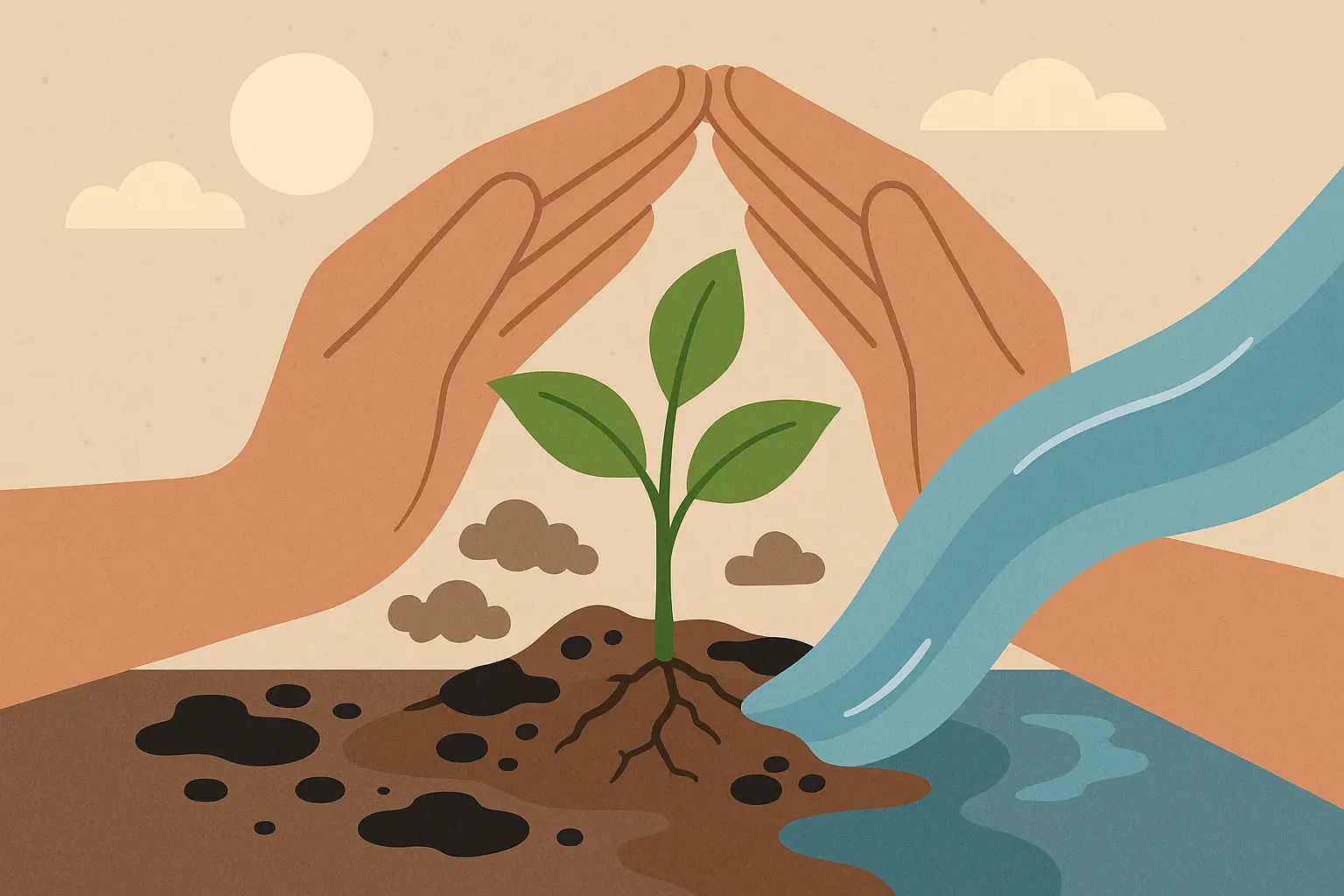
Courage and Perseverance Stories (The “Do the Right Thing Even When It’s Hard” Category)
Courage isn’t the absence of fear—it’s acting according to your values despite uncertainty, risk, or opposition. These stories reveal how authentic bravery shows up in both dramatic moments and daily choices.
Real courage often looks different than we expect. Sometimes it’s quiet, sometimes it’s saying no, and sometimes it’s choosing to help when nobody’s watching.
19. The Lighthouse Keeper
A lighthouse keeper maintains their post during a terrible storm, saving countless ships despite personal risk and no recognition, illustrating how courage often involves quiet, unseen acts of service.
20. The Mountain Climber’s Choice
Elena had trained for three years to summit Mount Denali, investing her savings, vacation time, and physical conditioning toward this dream. She was within 500 feet of the peak—closer than she’d ever been—when she encountered James, a fellow climber who had fallen and broken his leg.
James was conscious but couldn’t walk. His climbing partner had continued to the summit, planning to get help on the way down, but the weather was deteriorating rapidly. Elena faced an agonizing choice: she could continue to the summit she’d worked so hard to reach, or she could abandon her dream to help a stranger.
I know most of us aren’t climbing mountains, but we’ve all been there—you’re about to get something you’ve worked really hard for, and then life throws you a curveball. Do you help the person who needs it, even if it costs you your dream?
The decision became more complex when she realized that helping James would require her to use her emergency supplies and energy reserves, making her own descent more dangerous. She also knew that James had made several risky decisions that contributed to his accident—decisions she would never have made.
Elena chose to help. She administered first aid, shared her supplies, and began the painstaking process of helping James descend. The weather worsened, and they spent a terrifying night in an emergency shelter, uncertain if they would survive. During their descent, Elena discovered that James was a single father whose children were waiting for him at base camp. She also learned that her own physical conditioning and emergency preparedness—skills she’d developed for her summit attempt—were exactly what saved both their lives.
They reached base camp safely, but Elena never got her summit. Initially, she felt devastated—three years of preparation seemingly wasted. But in the weeks that followed, she received messages from James’s family, from other climbers who heard her story, and from search-and-rescue teams who praised her decision.
Elena realized that her true summit hadn’t been a geographic point—it had been the moment she chose human life over personal achievement. She had reached a peak of character that no mountain could provide.
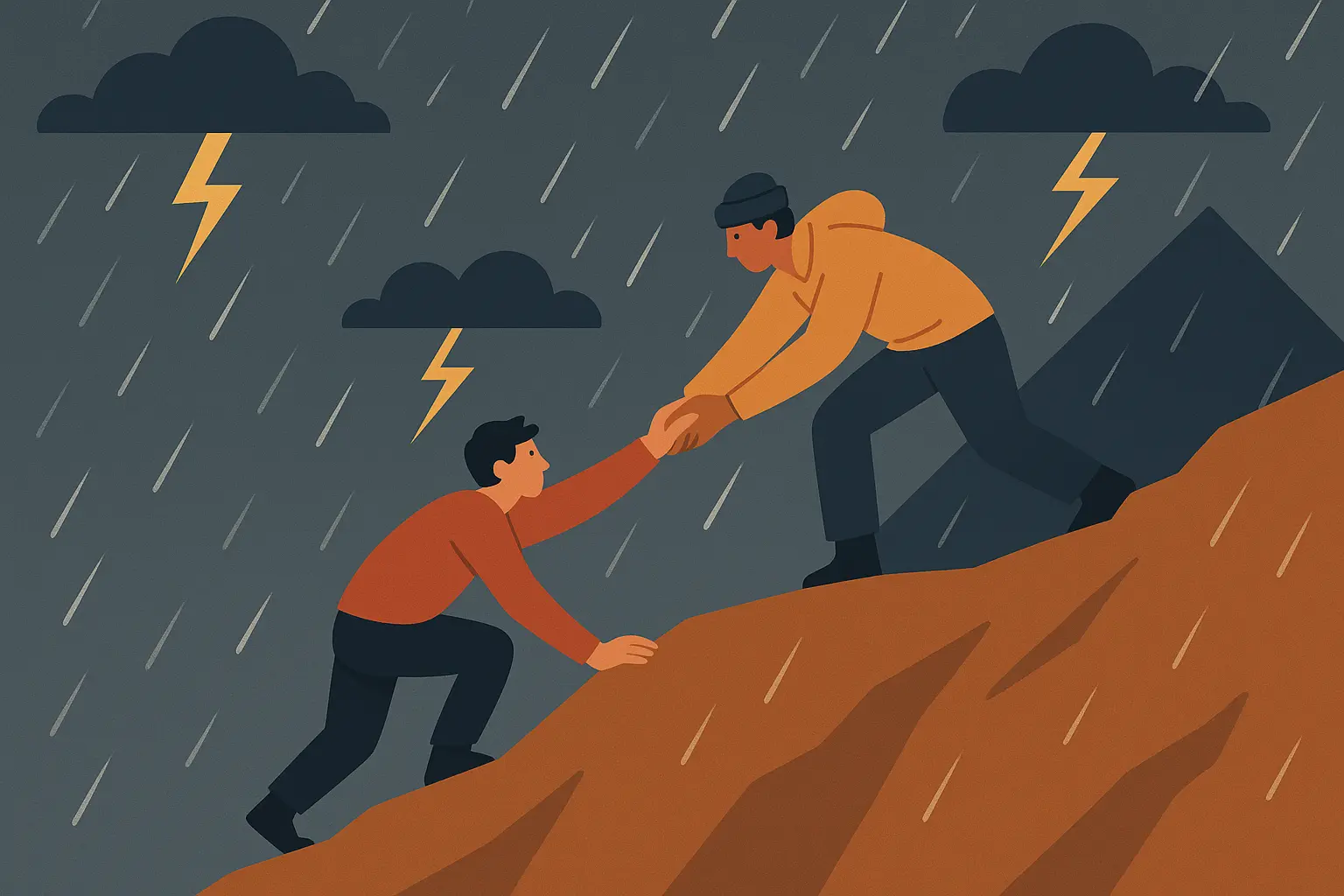
21. The Small Voice
A child speaks up about an injustice when adults remain silent, showing that courage isn’t about being fearless but about acting despite fear, and that moral authority comes from doing what’s right, not from age or position.
22. The Phoenix Project
After a devastating failure, an entrepreneur must decide whether to give up or rebuild. The story shows that true resilience involves learning from failure and finding new ways to serve others through our work.
Technology and Modern Ethics Stories (The “Welcome to the Future, Now What?” Category)
Technology amplifies human capabilities—including our capacity for both good and harm. These stories help navigate ethical challenges that previous generations never faced while maintaining timeless principles of responsibility and authenticity.
We’re living through the most rapid technological change in human history, and our moral frameworks haven’t caught up. These stories bridge that gap.
23. The Algorithm’s Choice
Sarah, a lead programmer at a major tech company, discovers that the hiring algorithm she helped create consistently ranks candidates with “ethnic-sounding” names lower than identical resumes with “traditional” names. The algorithm learned this bias from historical hiring data where human recruiters showed these preferences.
Sarah faces a dilemma: revealing the bias could harm her career and her company’s reputation, but staying silent perpetuates systemic discrimination. She learns that the algorithm has already influenced thousands of hiring decisions.
After consulting with ethicists, affected communities, and her own conscience, Sarah chooses to document the bias thoroughly and present solutions to leadership. When they initially resist, she takes her findings to the company’s ethics board and eventually to industry publications.
The story concludes with Sarah leading a new initiative to build ethical AI systems, showing that moral courage in technology requires both technical expertise and the willingness to prioritize human welfare over convenience or profit.
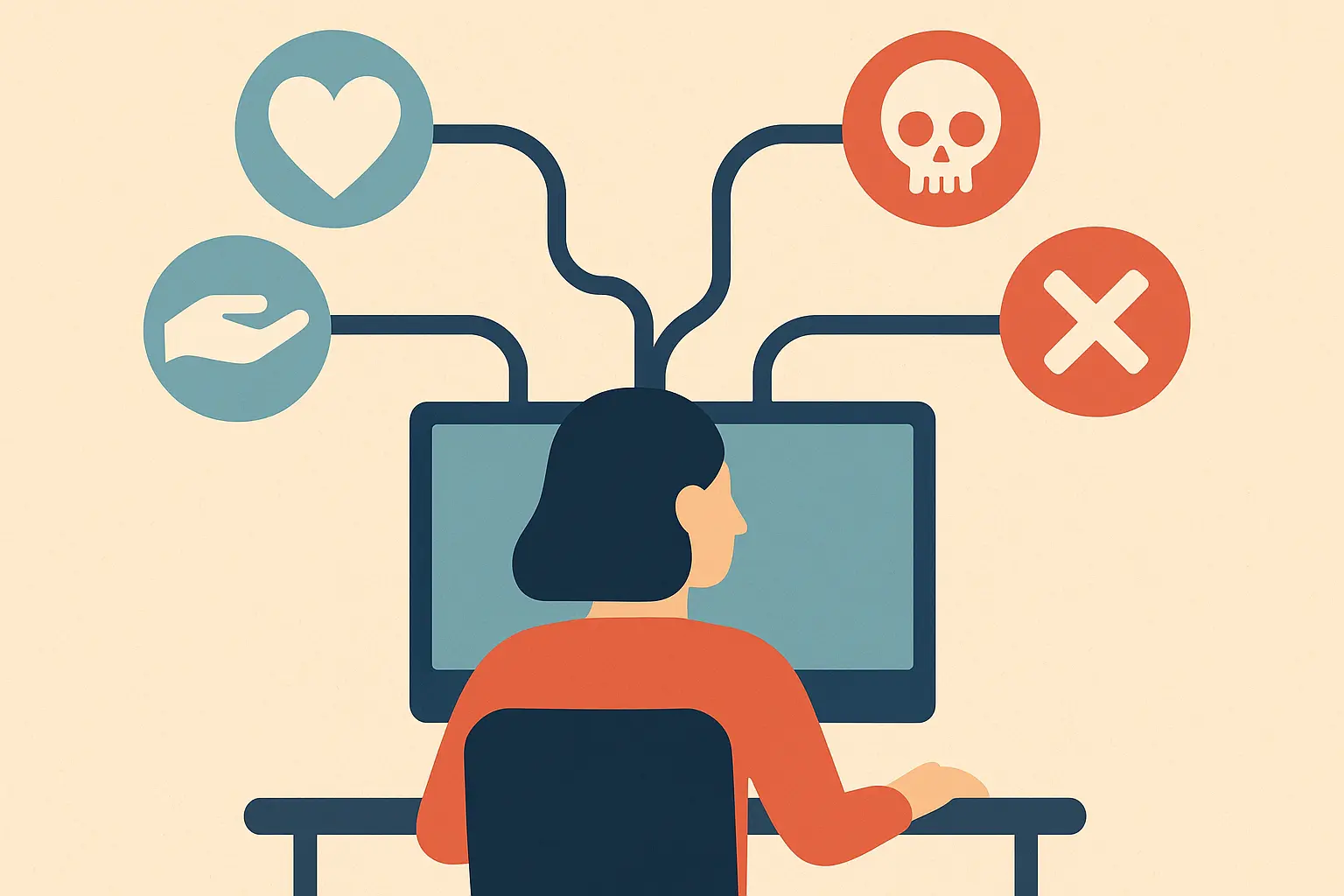
24. The Connection Paradox
The Chen family seemed perfectly connected—each member had the latest devices, they shared photos constantly on social media, and they were always “in touch” through messaging apps. Yet during a power outage that lasted three days, they made a startling discovery: they barely knew how to talk to each other.
Sixteen-year-old Alex realized they knew more about their online friends’ breakfast choices than their own father’s dreams. Mom discovered she had been “liking” her daughter’s posts instead of actually listening to her concerns about school bullying. Dad found he had been managing his work relationships through screens while neglecting his family relationships in person.
The crisis deepened when they learned that Alex had been struggling with anxiety and depression for months, sharing their pain with online strangers while feeling unable to connect with family members who were physically present but emotionally absent.
The family’s journey back to authentic connection wasn’t about rejecting technology—Dad’s work required digital tools, and Alex’s generation naturally communicated through multiple channels. Instead, they had to learn intentional technology use.
They established “presence practices”: phone-free meals where they shared daily highlights and challenges, weekly “analog activities” such as hiking or board games, and “digital sabbaths” where they focused on face-to-face interaction. They also learned to use technology to enhance rather than replace real connection—video calling distant grandparents together, sharing photos that sparked conversations rather than replacing them.
The transformation took months. Alex began opening up about their struggles, leading to family therapy and better support systems. Mom and Dad rediscovered shared interests beyond managing household logistics. The family learned that true connection requires presence, vulnerability, and intentional attention—qualities that technology can support but never replace.
25. The Virtual Reality Mirror
A person becomes addicted to a virtual world where they can be anyone, eventually learning that authenticity and facing real-world challenges are essential for genuine growth and meaningful relationships.
How to Actually Use These Stories (Without Being Preachy)
Stories become powerful when they move beyond entertainment to transformation. Here’s how to use these narratives in different contexts for maximum impact. Whether you’re working with bedtime stories that teach values or developing classroom curricula, these stories need thoughtful implementation strategies.
Here’s what I’ve learned: the same story can create profound change in one setting and fall completely flat in another. The difference isn’t the story—it’s how you use it.
|
Where You’re Using It |
Which Stories Work Best |
How to Share Them |
What to Expect |
|---|---|---|---|
|
Elementary School |
Personal Character, Relationship Building |
Role-playing, art projects, group discussions |
Better classroom behavior, more empathy |
|
Middle/High School |
Wisdom & Decision-Making, Technology Ethics |
Case studies, debates, creative writing |
Better critical thinking, ethical reasoning |
|
Family Time |
All categories (adjusted for age) |
Bedtime stories, family meetings, real-life connections |
Stronger family values, better communication |
|
Work Training |
Courage & Perseverance, Environmental Responsibility |
Workshop activities, team challenges, action planning |
Better leadership, ethical decision-making |
|
Community Groups |
Environmental & Social Responsibility |
Service projects, community discussions, advocacy planning |
Collective action, social engagement |
In Schools
Personal character stories work great with role-playing where students face similar choices to story characters. Relationship stories pair perfectly with group projects that require cooperation and conflict resolution. Wisdom stories become case studies for decision-making frameworks.
Environmental stories should connect to action planning sessions that move from story lessons to real-world projects. Courage stories gain power when paired with historical examples. Technology stories need current events discussions that connect principles to contemporary challenges.
High school teacher David Kim transformed his ethics class by using “The Algorithm’s Choice” story as a semester-long project. Students researched real AI bias cases, interviewed computer science professionals, and created presentations on ethical technology development. The project culminated in students presenting policy recommendations to the local school board about AI use in education. Three students changed their college majors to computer science with an ethics focus, and the school board adopted two student-recommended policies for evaluating educational technology.
At Home
Look, you don’t need a PhD in education to use these stories. At dinner, just say “Hey, this reminded me of something…” In the car, when your kids are fighting, tell them about the bundle of sticks. When your teenager is dealing with online drama, share the digital footprint story. It’s not rocket science.
You can adapt complex stories for younger children while keeping the core message. Create family “story time” traditions that encourage values discussions. Use stories as starting points for family rules and expectations. Connect story lessons to actual family decisions and challenges.
At Work
Stories work effectively in workplace training when connected to specific industry challenges—healthcare ethics, business integrity, customer service standards. They serve as case studies for leadership development and team-building exercises that emphasize shared values.

Why These Stories Work (And Others Don’t)
Understanding why these stories work helps you choose the right one for your specific situation. Here’s the honest truth about how each category performs.
Each category serves different purposes and audiences. Knowing their strengths and limitations helps you match stories to your specific needs.
|
Story Category |
Relevance |
Cultural Sensitivity |
Message Clarity |
Emotional Impact |
Practical Use |
Age Range |
|---|---|---|---|---|---|---|
|
Personal Character |
★★★★★ |
★★★★☆ |
★★★★★ |
★★★★☆ |
★★★★★ |
★★★★★ |
|
Relationship & Community |
★★★★☆ |
★★★★★ |
★★★★☆ |
★★★★★ |
★★★★☆ |
★★★★☆ |
|
Wisdom & Decision-Making |
★★★★☆ |
★★★★☆ |
★★★☆☆ |
★★★☆☆ |
★★★★☆ |
★★★☆☆ |
|
Environmental & Social |
★★★★★ |
★★★★★ |
★★★★☆ |
★★★★☆ |
★★★★★ |
★★★★☆ |
|
Courage & Perseverance |
★★★★☆ |
★★★★☆ |
★★★★★ |
★★★★★ |
★★★★☆ |
★★★★☆ |
|
Technology & Modern Ethics |
★★★★★ |
★★★★☆ |
★★★☆☆ |
★★★☆☆ |
★★★★★ |
★★★☆☆ |
Personal Character Stories
These are the workhorses—they address timeless issues everyone deals with, have clear messages about personal growth, and work for everyone from kindergartners to grandparents. They’re your go-to category.
Technology and Modern Ethics Stories
Super relevant to today’s challenges and highly practical for modern life, but they’re more thought-provoking than emotional and work best for teens and adults who understand technology. Good luck explaining algorithms to a kindergartner.
Environmental and Social Responsibility Stories
These hit hard because we’re all worried about the planet our kids are inheriting. They’re inclusive, globally aware, and inspire concrete actions, making them perfect for middle school through adult audiences.
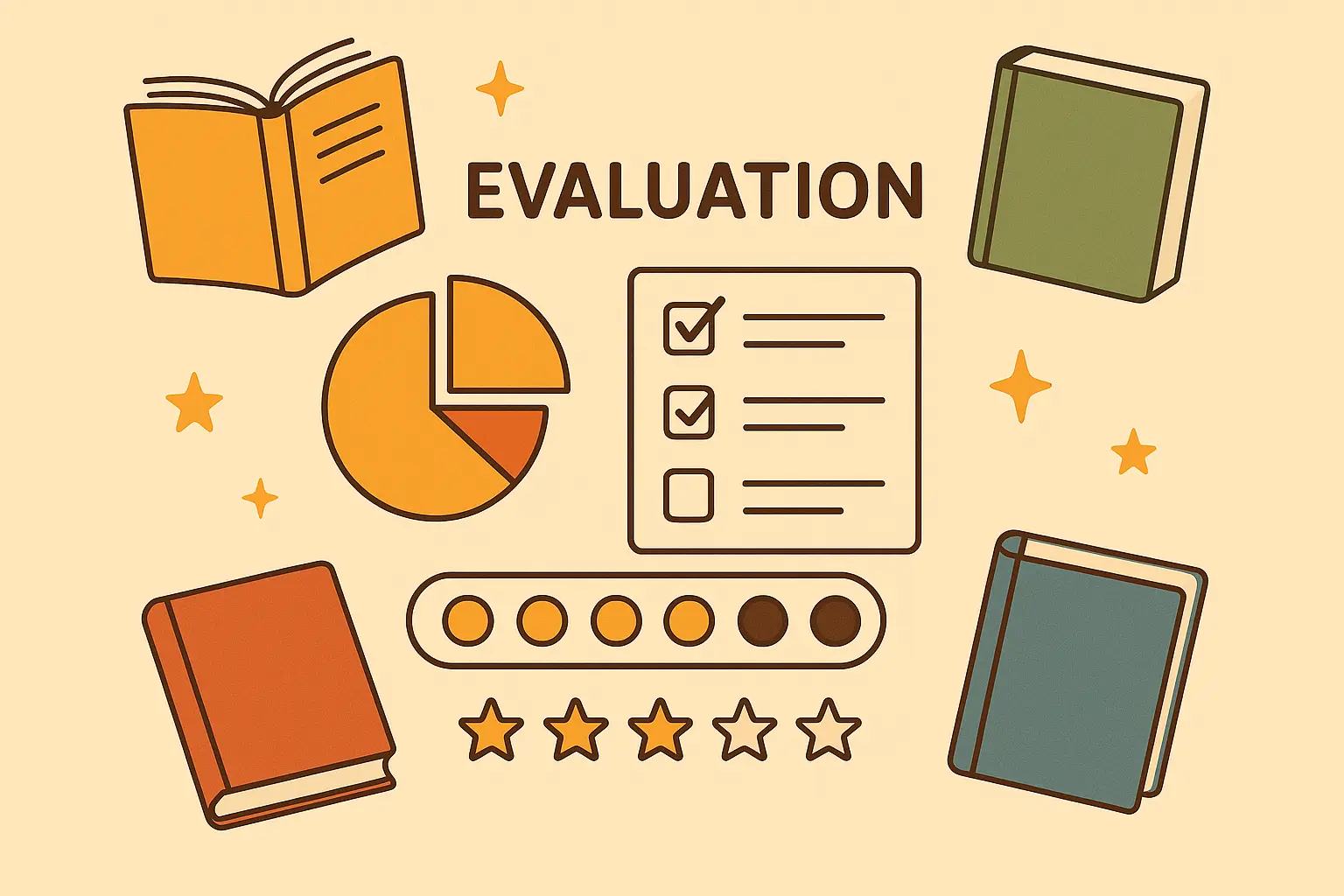
How Nairrate Helps You Create Stories That Don’t Suck
Creating effective stories requires balancing entertainment with instruction—which often leads to writer’s block or preachy narratives that make people cringe. Nairrate’s AI-powered tools solve these problems. Whether you need compelling examples for educational settings or want to understand the brain science behind effective storytelling, Nairrate provides the foundation for crafting stories that actually matter.
Creating Original Stories for Your Specific Situation
Whether you need a story about digital citizenship for your classroom, want to address a particular behavioral issue with your child, or need to inspire environmental action in your community, Nairrate’s story generator helps you craft narratives that resonate with your specific audience and situation.
Updating Classic Tales for Modern Problems
Classic stories often need contemporary updates to maintain their impact. Nairrate understands both traditional storytelling elements and modern contexts, helping you reimagine timeless tales for today’s challenges while preserving their essential wisdom.
Creating Discussion Starters
Nairrate’s Story Starters Generator creates compelling openings that set up moral dilemmas for discussion groups, classroom activities, or family conversations. These AI-generated prompts spark meaningful dialogue about ethics, values, and decision-making.
Developing Characters That Feel Real
Effective stories need characters who feel authentic rather than preachy. Nairrate’s character development tools help create compelling protagonists who face realistic moral choices, allowing readers to connect emotionally with characters navigating ethical challenges.
Want to create stories that inspire positive change? Explore Nairrate’s storytelling tools and discover how AI can help you craft narratives that entertain, educate, and transform lives.
Final Thoughts
Here’s what I’ve figured out after years of collecting these stories: The best ones don’t give you all the answers. They give you better questions. And honestly? In a world this complicated, better questions might be exactly what we need.
I used to think moral stories were just for kids until I found myself in my own “two wolves” moment during a brutal work conflict. Suddenly that Cherokee grandfather’s advice wasn’t just cute—it was exactly what I needed to hear. Sometimes the cheesy stuff works.
These 25 stories represent both timeless principles and contemporary challenges, offering frameworks for navigating an increasingly complex world with integrity and purpose. Whether you’re seeking stories that resonate with diverse audiences or crafting your own narratives for specific situations, the principles and examples in this guide provide a comprehensive foundation.
I get it—some of you are thinking this sounds like after-school special territory. Trust me, I rolled my eyes at this stuff too. But then I watched a simple story about a cracked pot help my friend’s daughter stop hating her learning disability. Sometimes the stories that seem too simple on the surface carry the deepest truths.
The most effective stories don’t just tell us what to think—they help us understand how to think about difficult decisions. They provide emotional experiences that make abstract principles concrete and memorable. Whether you’re facing personal struggles, relationship challenges, or ethical dilemmas in your professional life, these stories offer guidance rooted in human experience and tested by time.
Remember that the power of any story lies not just in its message but in how it’s shared and discussed. Use these narratives as starting points for deeper conversations about values, choices, and the kind of person you want to become. The stories that change us most are often the ones we wrestle with, discuss with others, and apply to our own unique circumstances.
So next time life gets complicated—and it will—remember that humans have been using stories to figure things out for thousands of years. We’re not the first generation to face tough choices, and we won’t be the last. But we might be the first to have this many good stories at our fingertips. Use them.



Add comment